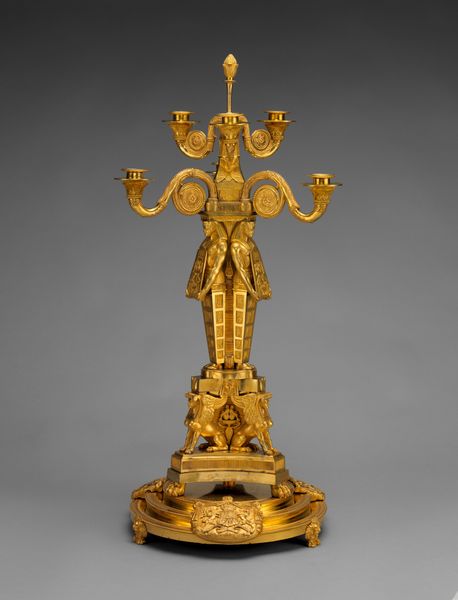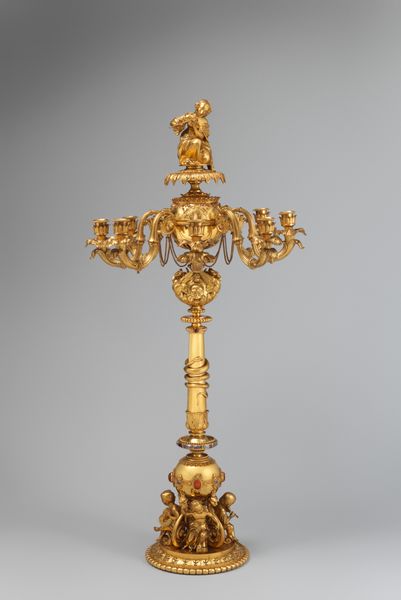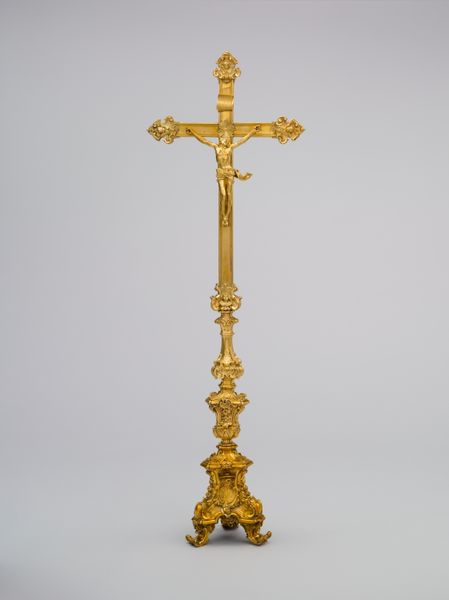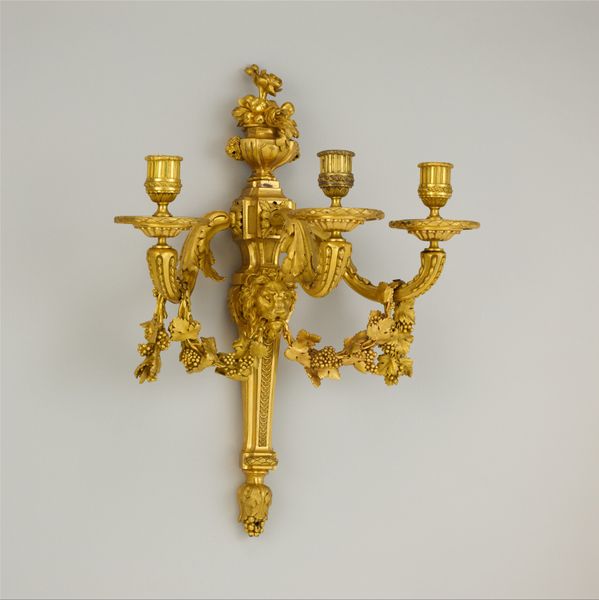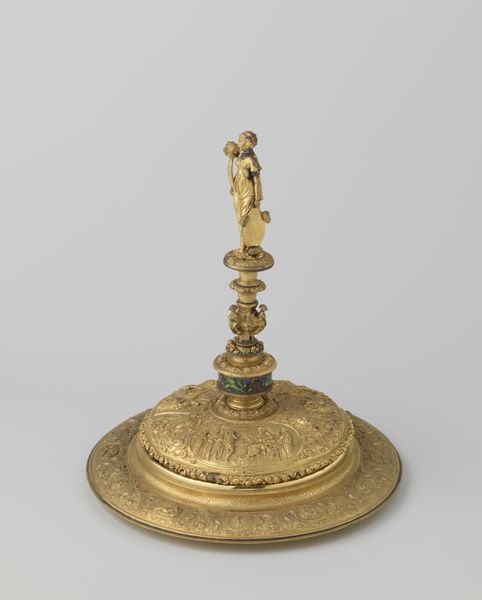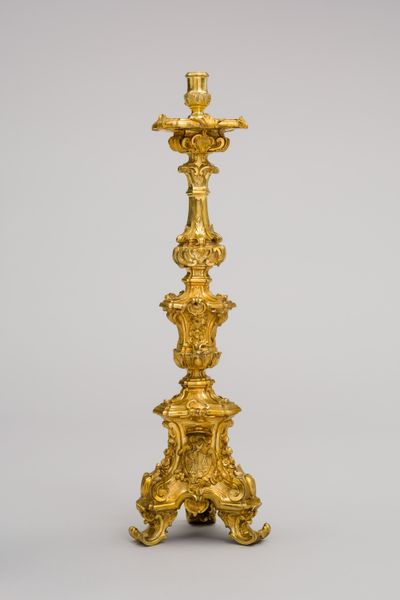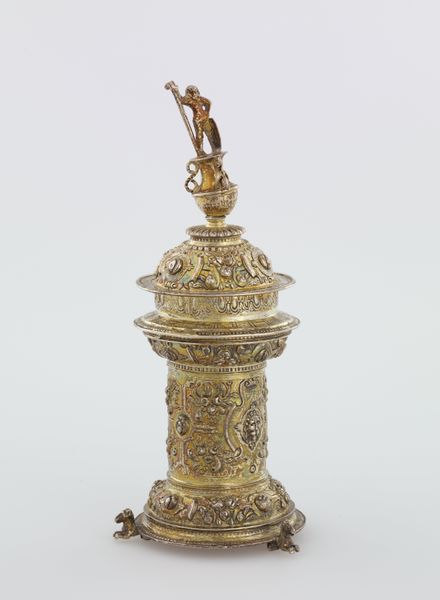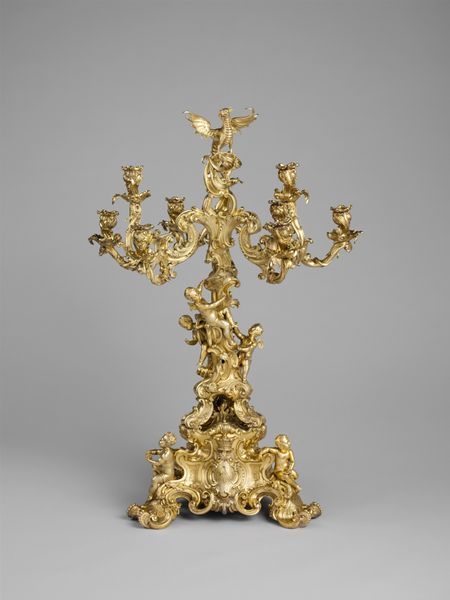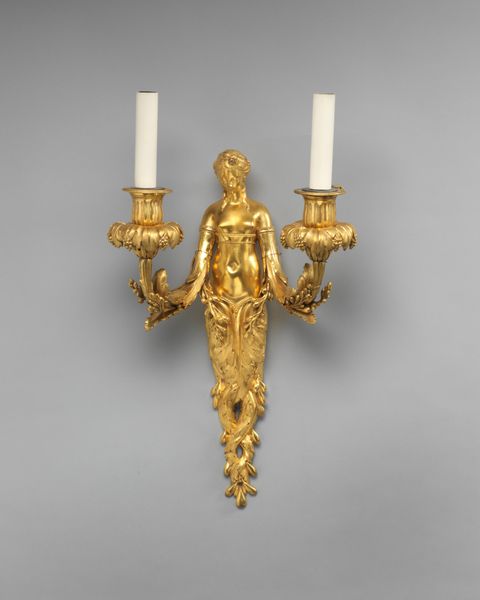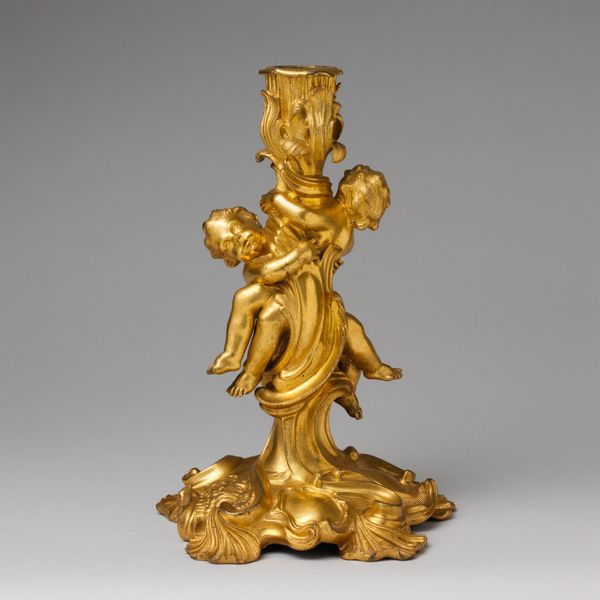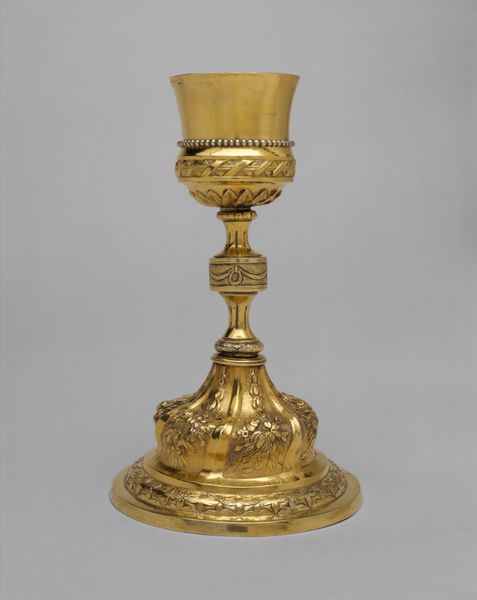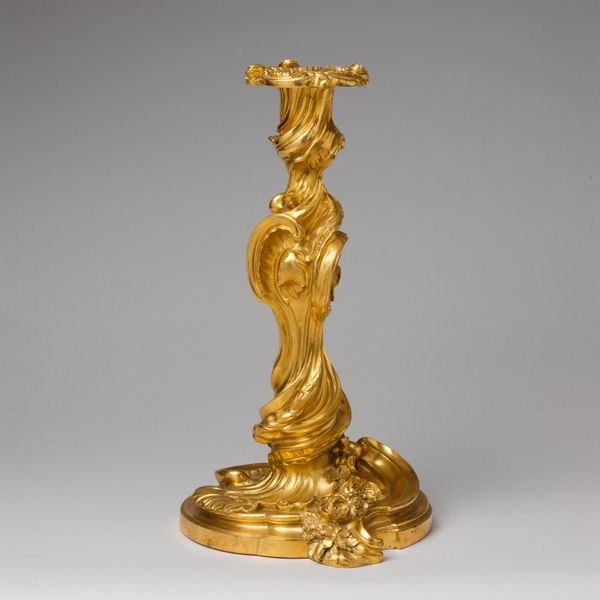
bronze, sculpture
#
neoclacissism
#
ancient-egyptian-art
#
bronze
#
sculpture
#
history-painting
#
decorative-art
Dimensions: Overall (candelabrum (.1a–g), confirmed): 29 3/4 × 15 × 13 1/4 in., 42 lb. (75.6 × 38.1 × 33.7 cm, 19.1 kg); Overall (stand (.2), confirmed): 3 1/2 × 14 5/8 × 14 5/8 in. (8.9 × 37.1 × 37.1 cm); Length (longest branches): 8 1/2 in. (21.6 cm)
Copyright: Public Domain
This gilded bronze candelabrum was created by Alexis Decaix, around the early 19th century, during the height of the "Egyptomania" craze in Europe. Following Napoleon's Egyptian campaign, there was a surge of European interest in ancient Egyptian imagery and aesthetics. This candelabrum embodies this fascination, borrowing motifs like stylized lotus blossoms and sphinxes, and reinterpreting them through a European lens. Consider how this object reflects the complex power dynamics of cultural appropriation. The candelabrum transforms Egyptian symbols into decorative elements for European elites, entwining the allure of the exotic with imperial ambition. Its luxurious design and craftsmanship speaks to the privilege and wealth of its intended audience. The warm glow of candlelight, cast by this object, would have illuminated a world of social gatherings and intimate moments, subtly reinforcing the status of its owner within the grand narrative of European dominance.
Comments
No comments
Be the first to comment and join the conversation on the ultimate creative platform.
